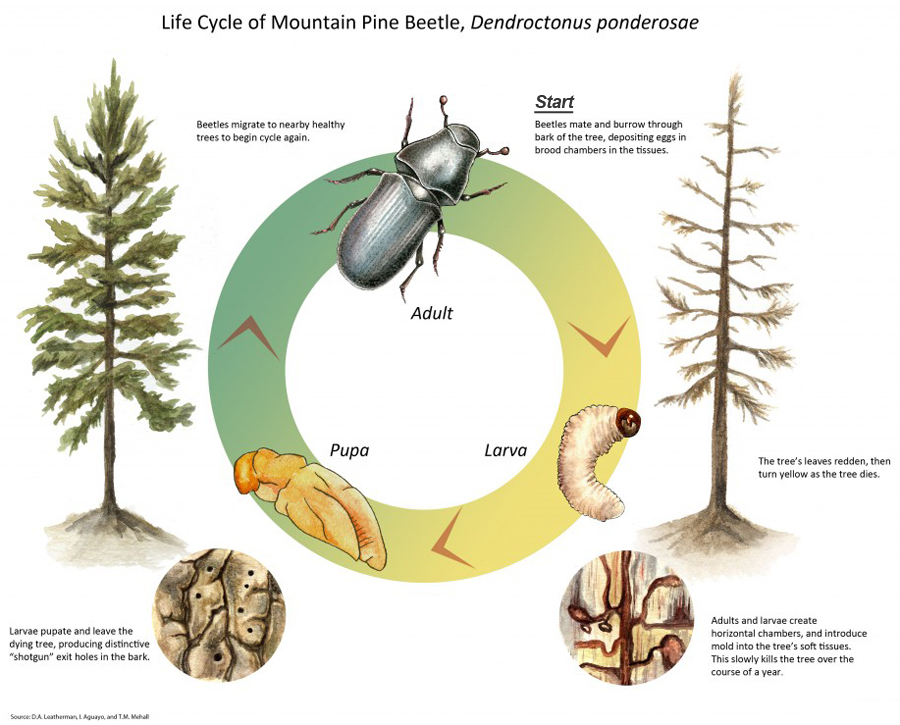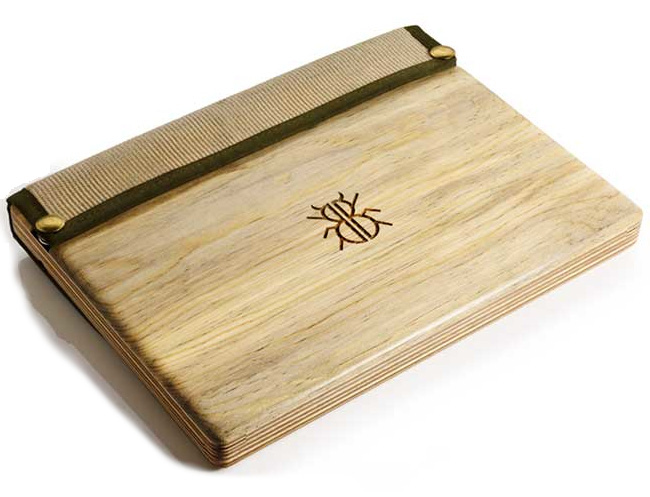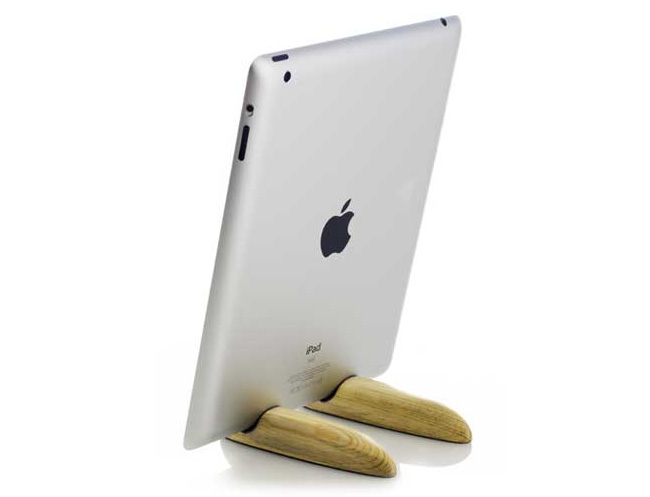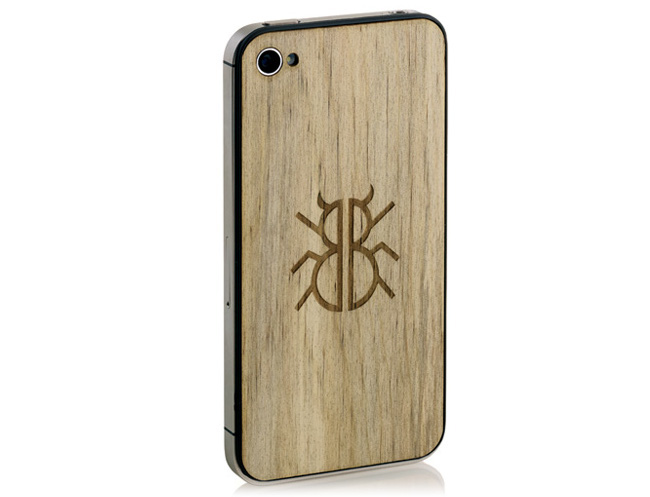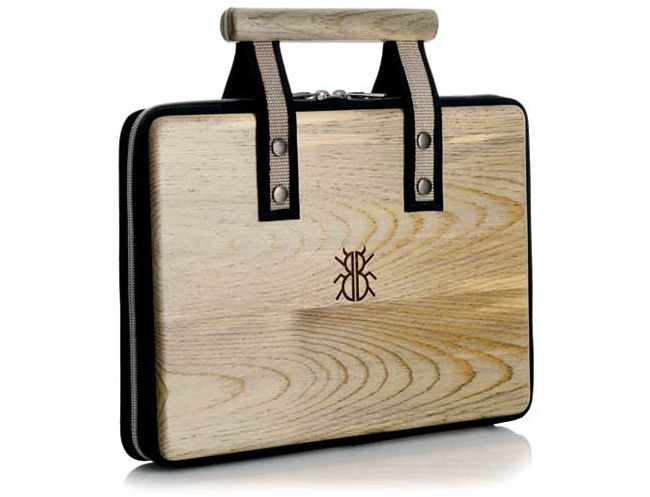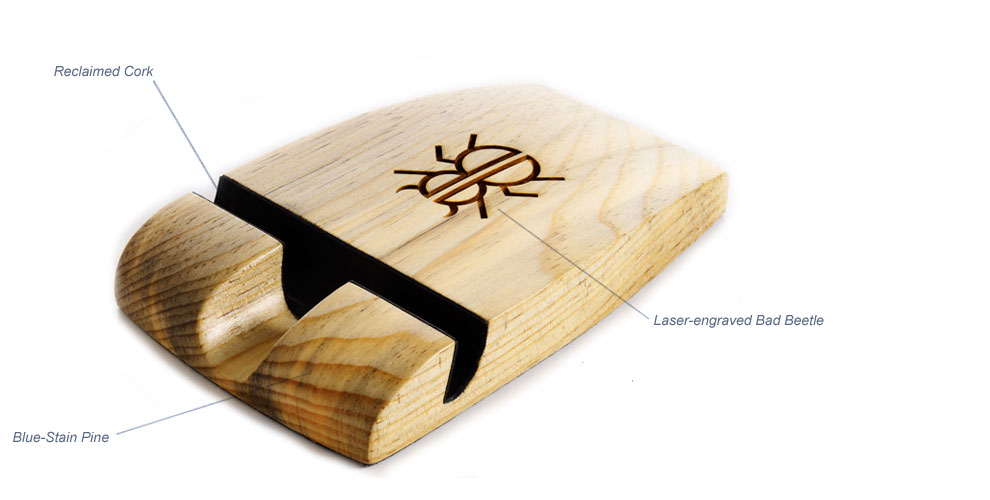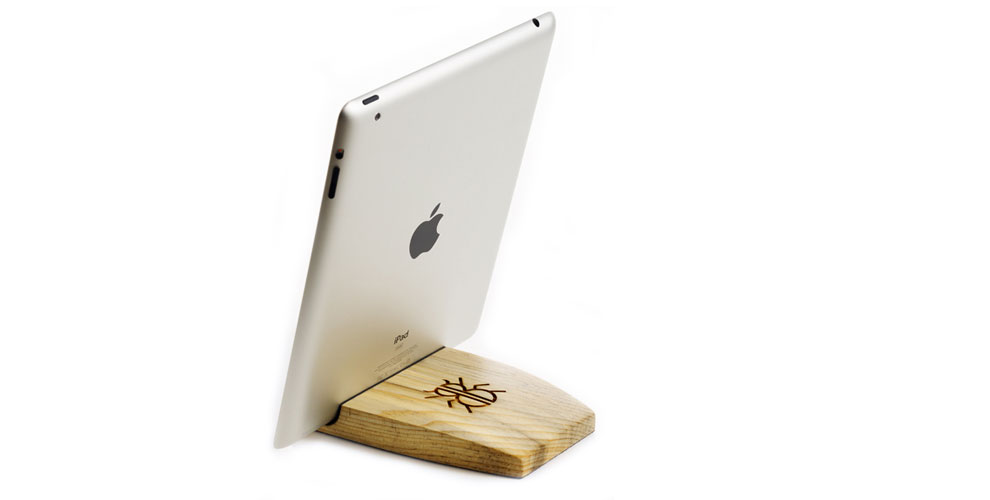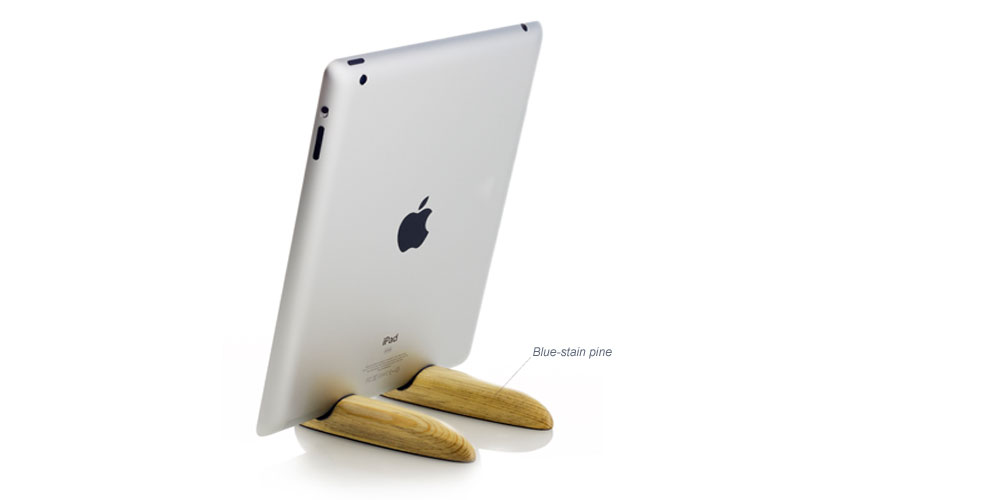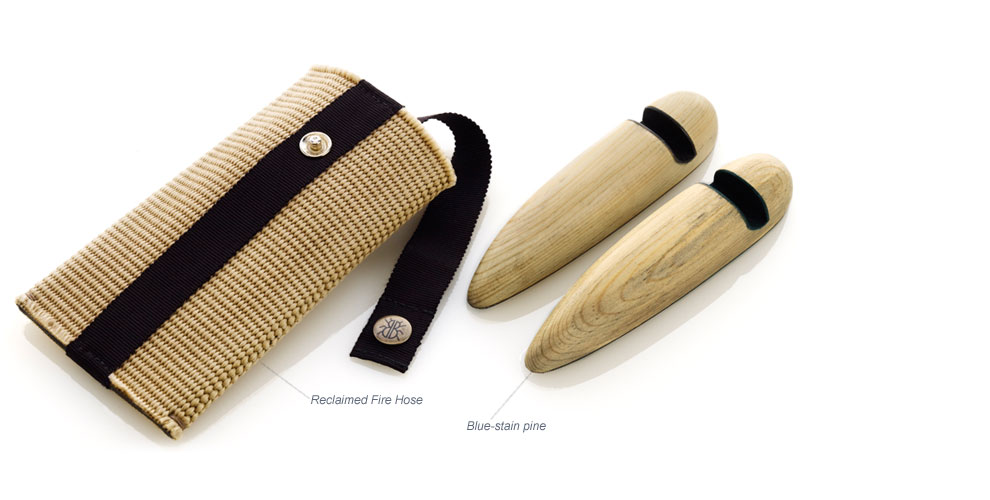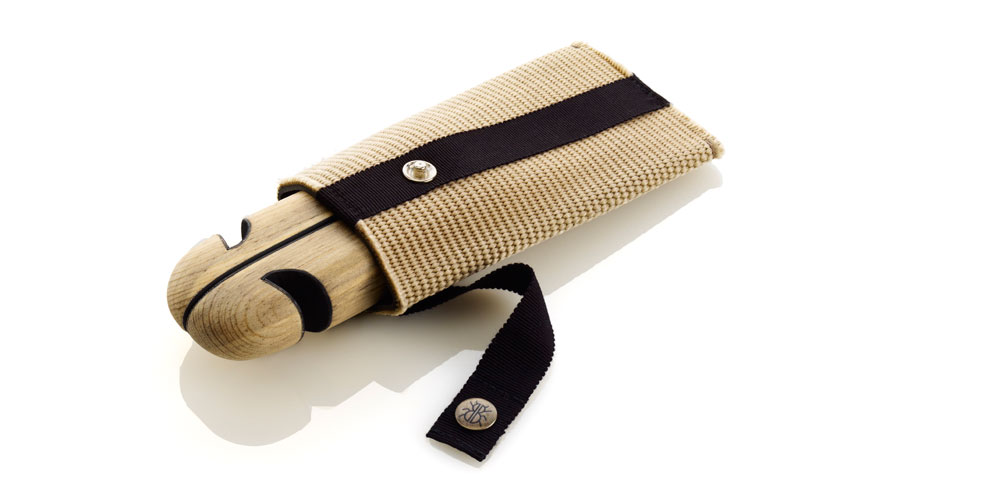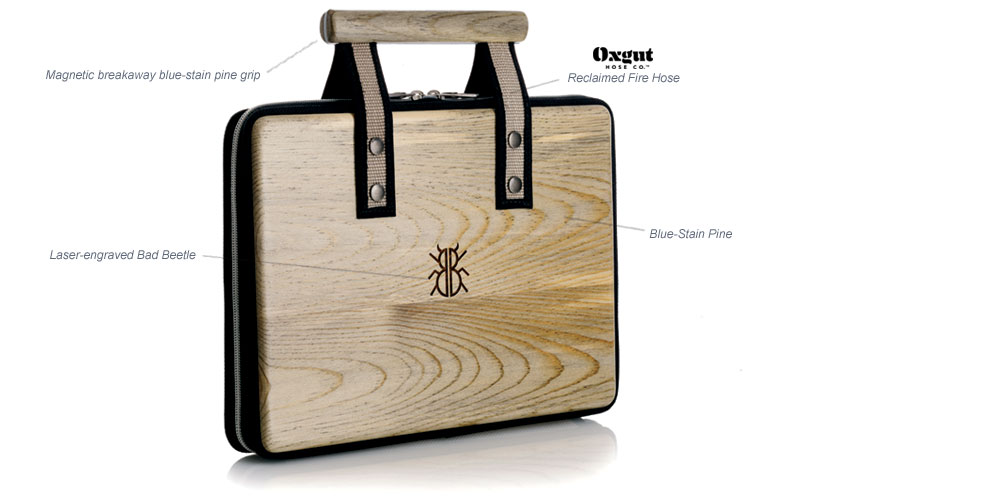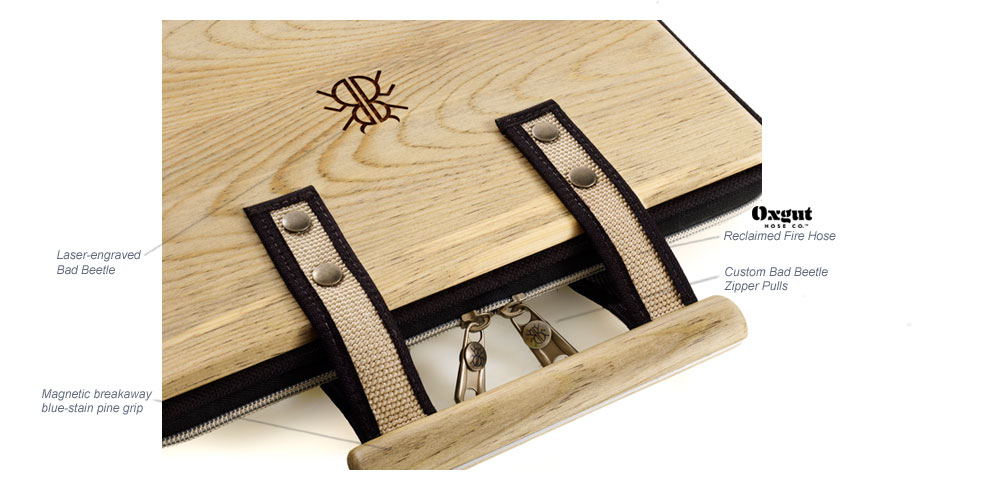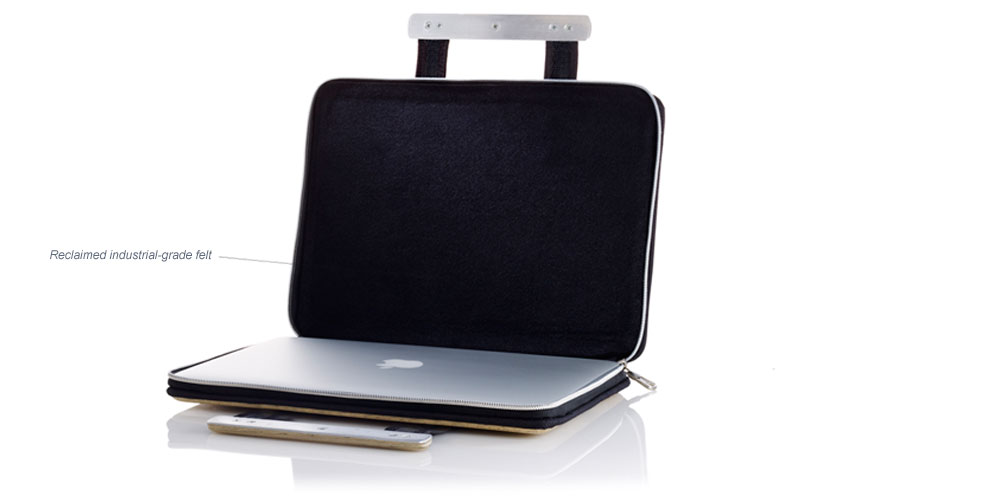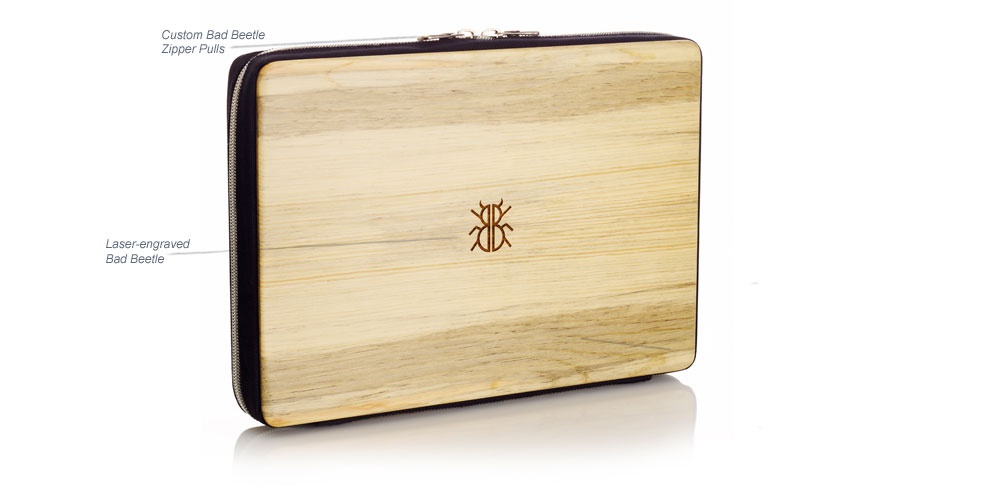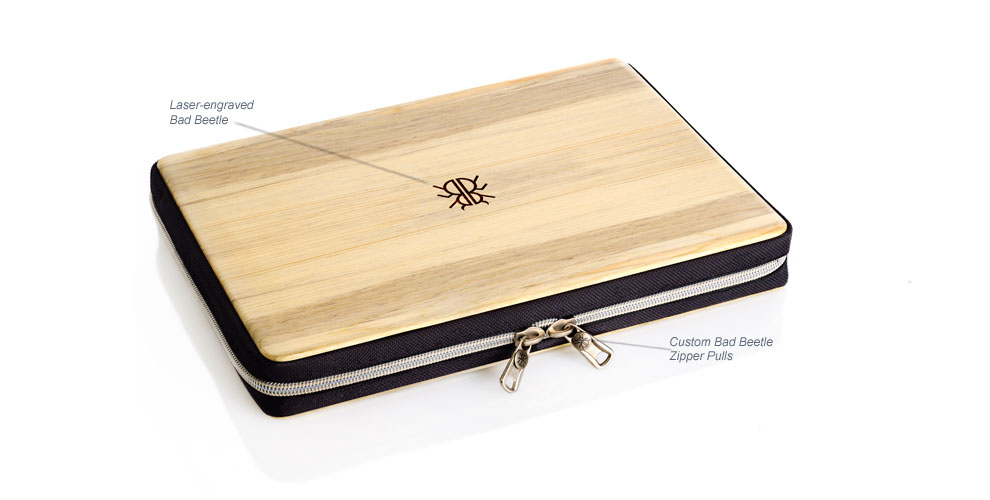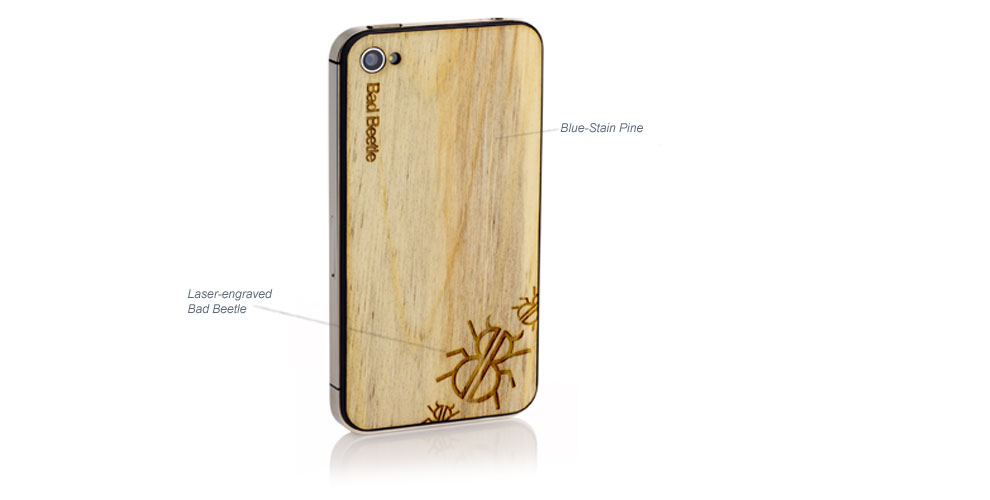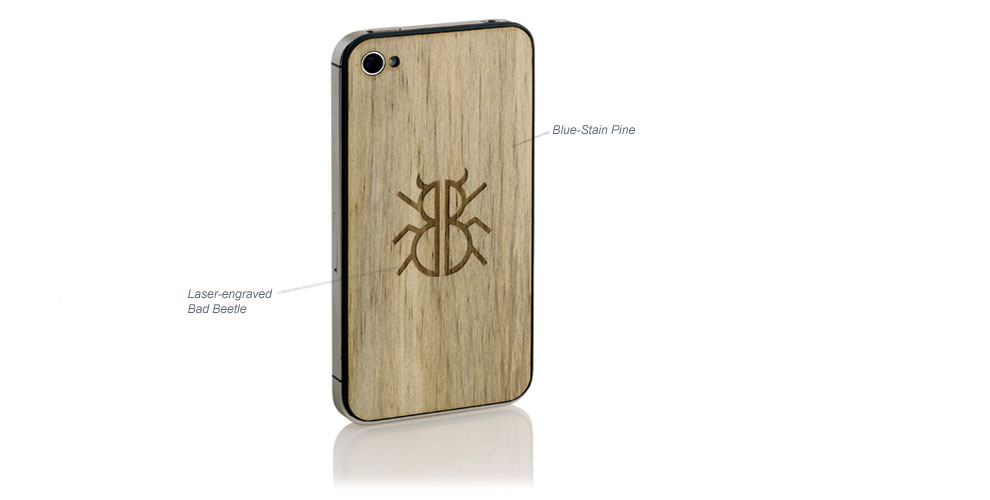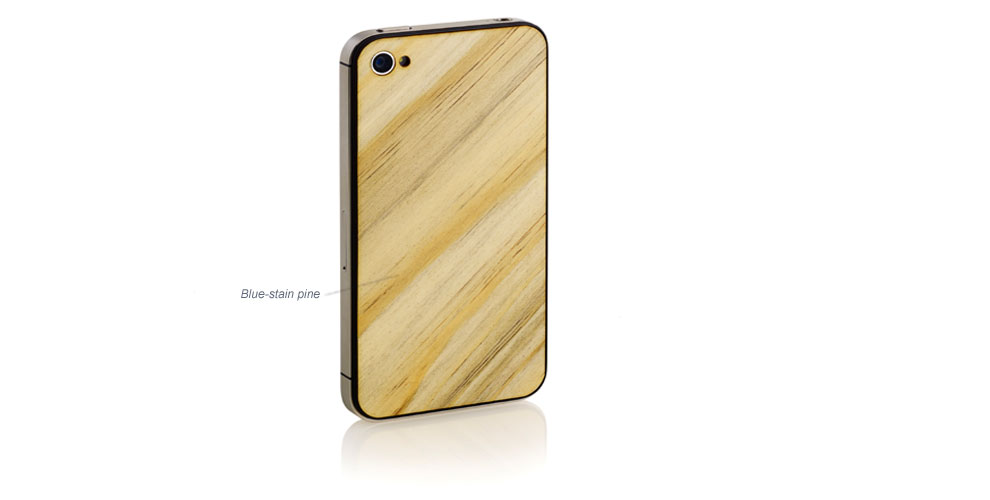Meet the Bad Beetle.®
The one-of-a-kind markings on our wooden Apple® accessories are brought to you by Montana's Mountain Pine Beetles. When these naughty nemeses invade trees, they create a beautiful, silvery blue stain. For the tree, it's curtains. But for you, it's a snazzy, insanely eco-friendly Bad Beetle accessory.
Look insideAll Wood Has A Story. This One Has A Tragedy.
The mountain pine beetle (MPB) is the most destructive pest of mature pine forests in North America.
Across western North America, from Mexico to Alaska, forest die-off is occurring at a rate unprecedented in the last century-and-a-half. The Rocky Mountains have seen nearly 70,000 square miles of forest — an area the size of Washington State — die since 2000. According to scientists, a warming climate and aging forests are the cause of the current MPB epidemic. Forests in Australia, Russia, France and other countries have experienced significant die-offs as well.
Adult beetles carry blue-stain fungus into the tree, which after a few months, discolors the outer wood a bluish-silver and clogs the tree’s circulation of water and nutrients. Ironically, the substance that ultimately kills the tree is what makes blue-stain wood so uniquely beautiful.
Popular recreational trails throughout North America have been forced to close due to the extensive risk of falling dead trees killed by MPB. Fires in MPB-infested stands burn more intensely than in unaffected pine. The long-term remedy is to thin susceptible stands of trees, leaving well-spaced, healthy trees. The U.S. Forest Service recommends salvage logging, followed by prescribed burning, as a solution for preventing further beetle spread and wildfires.
The Bad Beetle brand evolved out of the MPB problem currently plaguing North American forests.
When Life Hands You Lemons, Make Lemonade
Bad Beetle's own Montana ranchland has lost 10,000 trees to the latest outbreak of MPB. The choice was to either slash and burn the trees or to utilize the resource for making stunningly unique, blue-stain Apple® accessories. The decision was easy. Bad Beetle was born.

What Is The Mountain Pine Beetle?
The mountain pine beetle (MPB) Dendroctonus ponderosae, is a species of bark beetle native to the forests of western North America from Mexico to central British Columbia. It has a hard black exoskeleton, and measures about 5 mm, about the size of a grain of rice.
Mountain pine beetles inhabit ponderosa, lodgepole, Scotch and limber pine trees. Normally, these insects play an important role in the life of a forest, attacking old or weakened trees, and speeding development of a younger forest. However, unusual hot, dry summers and mild winters in Montana during the last few years, along with forests filled with mature lodgepole pine, have led to an unprecedented epidemic.
What Does It Do?
The beetles swarm individual trees in a coordinated mass attack. They release pheromones (natural beetle attractants) to bring in even more beetles. When the tree is full they release a different pheromone to tell the rest of the beetles to pick another tree. In historic infestations, entire mountainsides would be killed. Today, entire forests and entire mountain ranges are being attacked and killed.
Healthy trees can repel the attack by pushing the boring beetles from their holes with sap. Mature trees are the main targets of the bark beetles because the younger trees rapid growth allows efficient production of sap.
The beetles feed on the thin cambium layer between the bark and the sapwood. (This is the part of the tree that grows and carries water and nutrients from the roots to the leaves and energy from photosynthesis to the roots.) The boring beetles quickly girdle the attacked tree; their feeding destroys the conduits for water and nutrients, and it the tree dies. It difficult to tell which trees have been attacked until the year after their death because the needles stay on the tree and stay green for quite some time - like a fresh cut Christmas tree. The year after the tree is killed it turns the characteristic bright red color. Then within another year or two, all of the needles fall off of the tree and it turns a desolate gray.
What Is Being Done To Thwart Attacks?
The long-term remedy is to thin susceptible stands of trees, leaving well-spaced, healthy trees. The U.S. Forest Service recommends salvage logging, followed by prescribed burning, as a solution for preventing further beetle spread and wildfires. Bad Beetle follows salvage logging practices in Montana.
